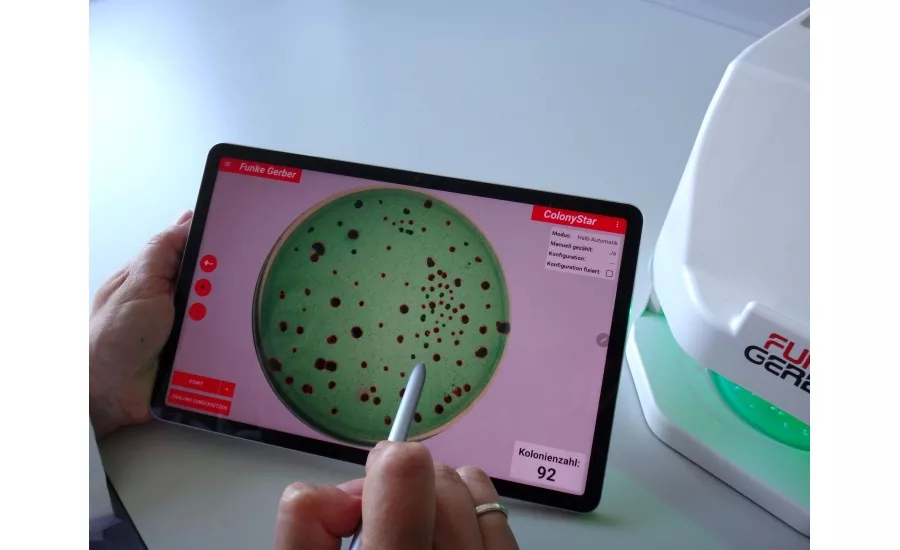ColonyStar Colony Counter with Detachable Tablet

Regular colony counts are part of the day-to-day tasks of many laboratories to rule out the contamination of products with bacteria, viruses, yeasts, or molds during production. To do this, Petri dishes containing the relevant samples are evaluated to determine the number of colonies formed. While the classic manual counting method means that every colony has to be marked individually, automatic devices can analyze numerous Petri dishes of the same type quickly.
However, the ColonyStar automatic device from Funke-Gerber is equipped with a camera and a cordless, detachable tablet, which makes the analysis of Petri dishes both fast and straightforward. With the unique assist mode, after tapping on a colony via touchscreen, other colonies of the same type are automatically recorded, marked, and counted. The selection can be corrected at any time. In this way, the lab worker retains full control while also achieving huge time savings. To mark 200 colonies, for example, only between four and 15 actions are necessary. The device operator retains complete control and does not need to rely solely on the device, as is the case with fully automatic solutions.
The device is optimized for day-to-day laboratory work and comprises a base station and a detachable tablet. The device houses the camera, the illumination unit, and the sample holder. The sample can be marked and analyzed via the tablet and the recognition software installed on it. After pressing the “start” button, the high-resolution camera creates an image of the Petri dish and sends it to the tablet wirelessly via Wi-Fi. Individual colonies can be marked by tapping on them on the screen with a finger or a touchscreen stylus.
In addition to the assist mode, the system can still be trained to identify selected colonies so that fully automatic colony counts can be conducted on predefined samples. For example, ten to 15 Petri dishes containing the same species on the same agar media can be analyzed. After the learning phase, these colonies are saved as a profile, such as Salmonella or yeast. Colonies of the same type that match these can then be analyzed fully automatically. The Petri dish is placed on the scanner, and after the operator presses “start,” it displays the relevant number of colonies. Unlike purely fully automatic devices, the ColonyStar device learns automatically while counting.
The ColonyStar device is suitable for all Petri dishes up to a maximum diameter of 9.5 cm (3.7 in.) and can be used in all microbiology laboratories, such as in the food industry, but also in medicine, research, veterinary medicine, etc. The optional zoom function simplifies the selection of very small or less distinct cultures. The device is also competitively priced because it does not include unnecessary peripheral programs, and the software can function on a standard end device.
Funke-Gerber | www.funke-gerber.de
Looking for quick answers on food safety topics?
Try Ask FSM, our new smart AI search tool.
Ask FSM →





